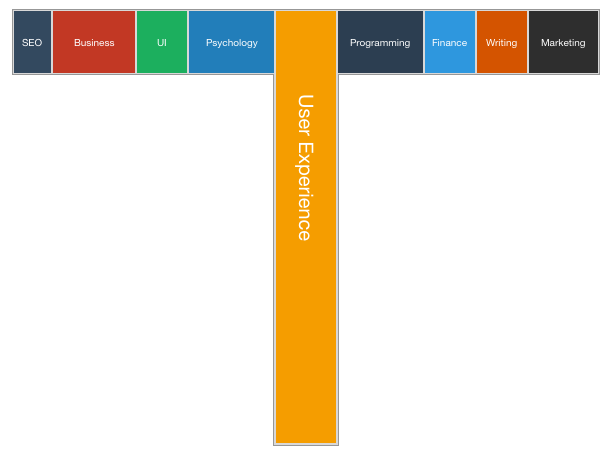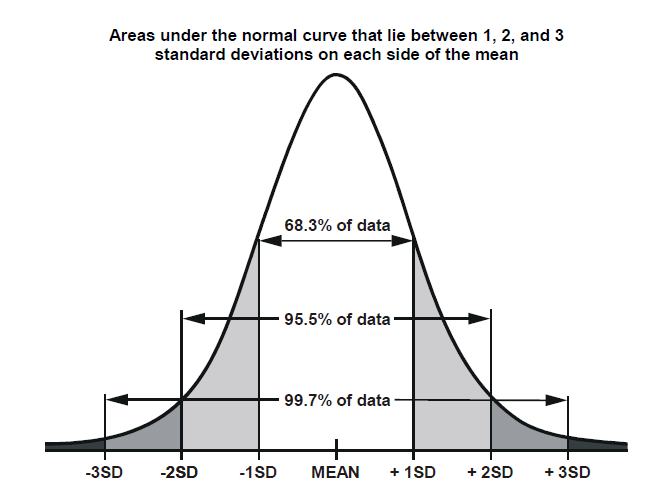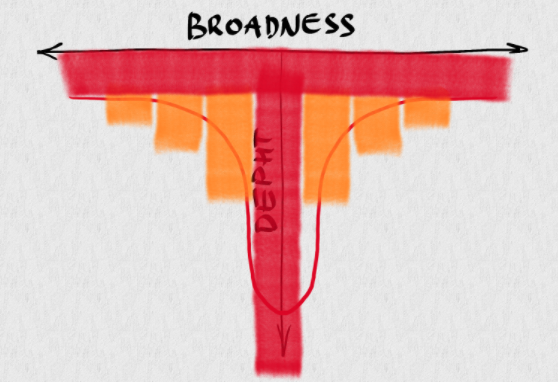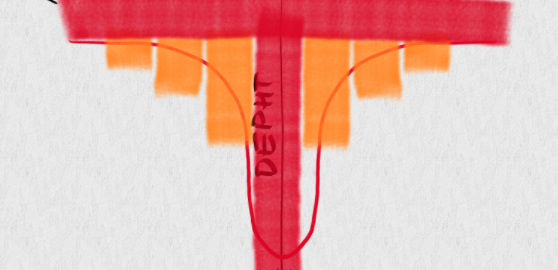There is a known concept of T-shaped skills or T-shaped people – the ones who developed T-shaped skill sets. The earliest popular reference to those terms was made by David Guest back in 1991. The concept gained real popularity after Tim Brown (the CEO of IDEO Design Consultancy firm) endorsed this approach to CV assessment as a method to build interdisciplinary work teams for creative processes.
The term T-shaped skills is also broadly used in agile software development to emphasize the need for cross-skilled developers and testers in agile teams.

It was a handy concept to point to the difference between T-shaped and I-shaped people – professionals who have deep narrow knowledge in one discipline while lack a good foundation in other related disciplines needed to interact with colleagues, be innovative, think wider, and see the big picture. Lack of broad knowledge limits these people to grow beyond their primary domain and become super-start professionals.
The T-shaped idea is about developing deep expertise in one’s primary area and getting basic skills in the other related areas.” What I do not like in that statement is the “getting basic skills” part. T-shaped approach still limits individuals to become highly valued, productive, and innovative professionals. This resolves the communication and collaboration ussie – basic skills are enough to support effective teamwork. That’s it. In reality, it doesn’t help to handle more complex tasks, be innovative, think wider, and see the big picture.
What does help is to learn deeper more areas than just the primary one? The closer discipline to the primary one, the better it should be learned. This idea leads to the new shape that I called Bell-Shape. The name goes from Bell Curve or normal distribution.

After applying the bell curve to the skills broadness chart we get a new skills depth distribution like this:

In the world of bell-shaped people it’s important to learn deep enough the core discipline, let’s say, programming, learn good enough the most close and critical conjugate disciplines like QA, DevOps, Systems Administration, BI, UX, System, and Business Analysis, etc. Learn the other related areas like microelectronics, math, physics, etc. on some solid level. And finally, gradually learn everything else on a non-zero level to support your personal and professional growth and build a wide horizon.
This idea can be applied to education, recruiting, professional assessments, and even personal life. This bell-shaped approach to learning helps to build a career. Growing up, at some point it’s not enough to understand just your specialty, but important to understand other related ones.
At the same time, the story is not about knowing everything equally deep. Even if it were possible, it doesn’t give any advantage because instead of collaboration and delegation the person would do everything on his/her own. That doesn’t make sense. Growth is about uniting people and motivating them to achieve bigger goals together. The leader needs to be able to talk in different languages with different professionals, but not to do their work on his own.
Building a bell-shaped skill set is a live-term gradual process. In the modern world, it’s not enough to get experience in a specific profession once and benefit from it the whole life. The world is growing so fast that it’s important to keep learning. So, the concept of bell-shaped skills helps determine what level of knowledge in what disciplines is nice to have.
For a Russian-speaking audience, my Youtube video is available on the same topic.
